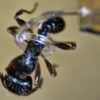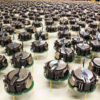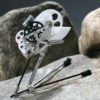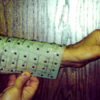Using a transparent elastomer, Iowa State University scientists have created tiny tentacles that robots can wrap around delicate objects to handle them safely. The spiraling microrobotic tentacles are described in a research paper published in the journal Scientific Reports. Demonstrating how one of the tentacles encircled an ant’s thorax, softly trapping the insect, lead researcher […]





